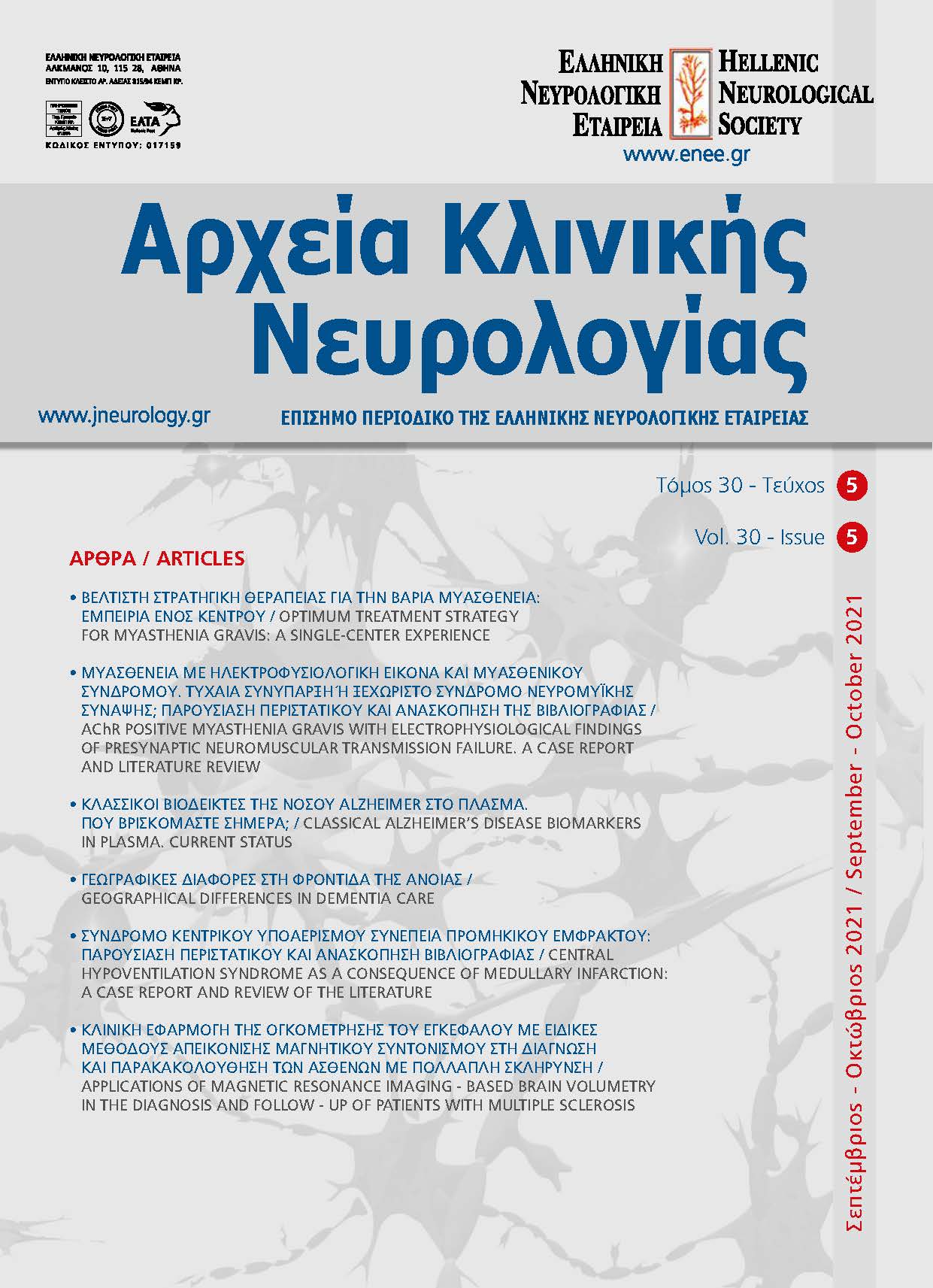OPTIMUM TREATMENT STRATEGY FOR MYASTHENIA GRAVIS: A SINGLE-CENTER EXPERIENCE
Keywords:
myasthenia gravis, ocular myasthenia, immunosuppressive drugs, quantitative scores, clinical outcomeAbstract
Background and Purpose: Patients with Myasthenia Gravis (MG) suffer from chronic fluctuating fatigue and occasionally permanent weakness despite treatment. This study aims to evaluate whether early immunotherapy and careful monitoring of MG patients in a specialized center could improve the clinical outcome. Methods: A total of 113 patients (median age 57 years, 59 females) with ocular or generalized MG and varied autoantibody profiles were subdivided into 59 patients who had received intense and early immunotherapy from disease onset (subgroup A) and 54 patients who were initially treated conservatively and later switched to an intense approach (subgroup B). Classical scales for quantitative assessment of symptoms were employed and rescue therapy or medication switching were based on preset criteria, common for all patients. Results: A desirable Postintervention Status was achieved in 66.4% of our patients, with no detectable weakness in 33.6% of them. Crisis occurred in 1.8% and no MG-related deaths were recorded. Subgroup A compared to subgroup B showed a significantly better Postintervention Status and a much lower chance of generalization of ocular myasthenia (7.7% versus 75.0%). Patients in subgroup B also showed better clinical outcome i.e. lower Quantitative MG score and MG Foundation of America class, following optimization of treatment. Conclusions: The suggested approach, consisting of early initiation of immunotherapy, close monitoring, and appropriate treatment modifications, meets the main treatment objectives, i.e. prompt and sustained improvement, reducing the risk of generalization, preventing or minimizing crises and achieving a positive impact on the quality of patients’ life.


